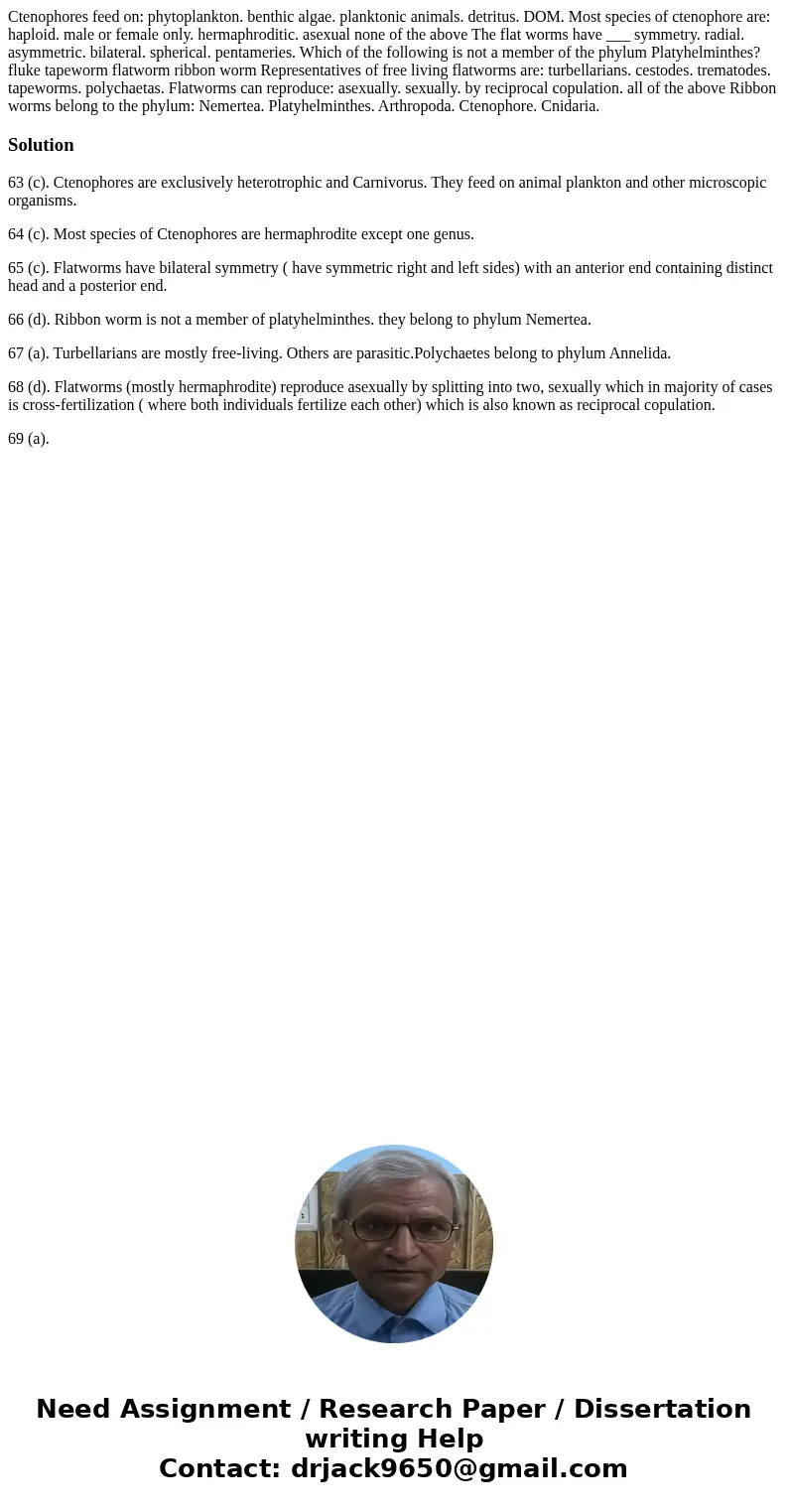Ctenophores feed on phytoplankton benthic algae planktonic a
Solution
63 (c). Ctenophores are exclusively heterotrophic and Carnivorus. They feed on animal plankton and other microscopic organisms.
64 (c). Most species of Ctenophores are hermaphrodite except one genus.
65 (c). Flatworms have bilateral symmetry ( have symmetric right and left sides) with an anterior end containing distinct head and a posterior end.
66 (d). Ribbon worm is not a member of platyhelminthes. they belong to phylum Nemertea.
67 (a). Turbellarians are mostly free-living. Others are parasitic.Polychaetes belong to phylum Annelida.
68 (d). Flatworms (mostly hermaphrodite) reproduce asexually by splitting into two, sexually which in majority of cases is cross-fertilization ( where both individuals fertilize each other) which is also known as reciprocal copulation.
69 (a).

 Homework Sourse
Homework Sourse